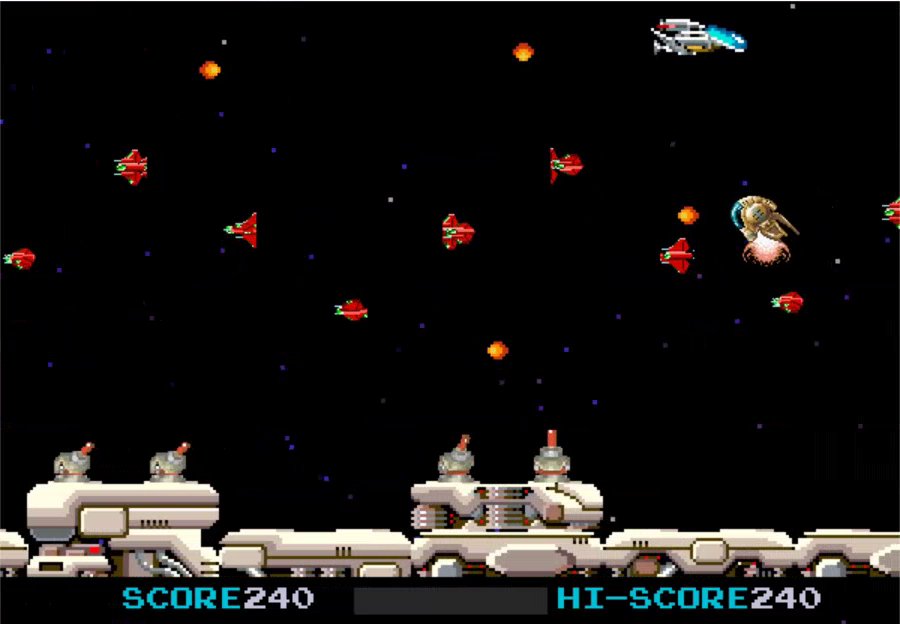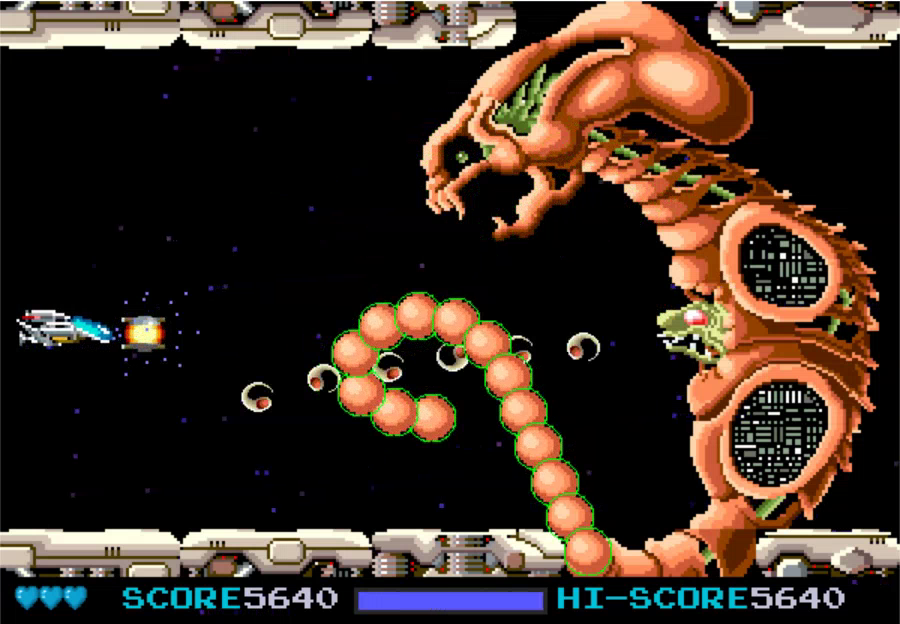R-Type
A recreation of the classic arcade game "R-Type"
About this project
A recreation of the first level from the classic arcade game
“R-Type”. This project tries to recreate the first level as
closely as possible, containing many of the same enemies,
upgrades, and level layouts. This was the first project at BUAS
and was used to introduce us to C++ game development. Even
though this was the first game project that I worked on, I still
managed to implement various interesting mechanics, like
per-pixel collision, spline-based movement for certain enemies
and the FABRIK algorithm for the boss fight at the end of the
level.
My contributions to the project
Since this is a personal project, everything has been done
by me. A brief list of systems that have been implemented
will be listed below:
Recreation of the player and upgrades:
I aimed to closely replicate the player mechanics from
R-Type into my game. This includes implementing player
animations for movement and the ability to charge the
weapon. Additionally, I also implemented the player
upgrades, known as "the force". When the player first
picks up "the force", it will connect to the player's
spaceship and act like a shield. If the player picks up
more upgrades, better weapons will be unlocked. Wea
pon upgrades include shooting multiple bullets
simultaneously or firing a laser-like projectile.
Multiple unique enemies:
In order to make the game feel as close to R-Type as
possible, I recreated and implemented a diverse array of
enemies with unique behaviors. This includes some
enemies that move very slowly but shoot a lot of bullets
at the player, enemies that move along a quadratic
bezier spline, turret-like enemies that shoot rockets at
the player (and use actual projectile motion for the
rocket), enemies that are stationary but shoot at the
player depending on their position in the level, etc.
 A screenshot of the player being attacked by a lot of
different enemies.
A screenshot of the player being attacked by a lot of
different enemies.
Boss fight at the end of the 1st level:
At the end of the first level is a boss fight
which is a recreation of the Dobkeratops enemy from the
original R-Type. This boss has a unique attack and a lot
of health, therefore making it hard to defeat. In order
to recreate the tail from the original boss, I decided
to do some research into FABRIK, which is an algorithm
for solving inverse kinematics problems.
FABRIK implementation for the tail:
The tail is composed of smaller spheres (or tail
segments), which are controlled using the FABRIK
algorithm. With FABRIK, only the end piece of the tail
needs to be moved, and the other tail pieces follow
suit. This approach allows for the setup of various
movements on the final tail piece, such as direct
movement towards the player or using multiple sine
waves. As a result, the tail moves in interesting
patterns and making the boss more challenging.
Multiple types of collision:
In this project, various objects such as level tiles,
the player, and enemies, can have different collision
types. These different collision types are configured
individually for each tile within Tiled, the 2D editor
that was used to create the levels. All the different
collision types mentioned below can interact seamlessly
with each other, which means that, for example, sphere
collision and AABB collision will properly
collide.
AABB collision:
Rectangular objects, like the player, can use AABB
collision. The size of the AABB can easily be changed
for each object.
Sphere collision:
Spherical objects, like flying enemies and
powerups/pickupables, can use sphere collision. The
radius of the sphere collision can easily be changed for
each object.
Per-pixel collision:
For more detailed objects that cannot use AABB or
spheres for accurate collision detection, per-pixel
collision has been implemented. This is used for
detailed level pieces and allows for accurate detection
at the pixel level. Since levels are quite small, and
since this is only checked between the player and
specific level tiles, it is feasible to do this without
any major performance impact.
 A screenshot of the boss fight at the end of the 1st
level.
A screenshot of the boss fight at the end of the 1st
level.
Quick overview
Project Type:
Game Project
Platform:
Windows
Tools:
C++
Role in Team:
Programmer
Project Duration:
6 weeks
Release Date:
November 5, 2021
Team size:
1
Role in Team:
Engine programmer and Lead